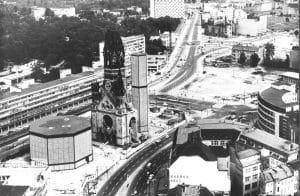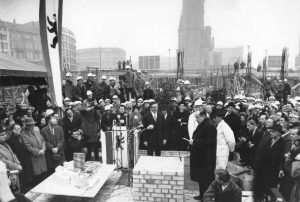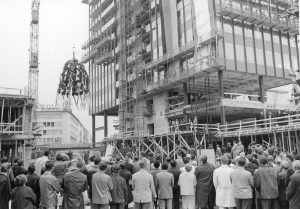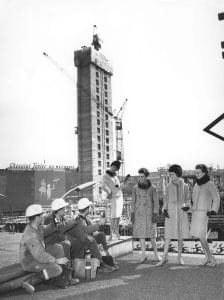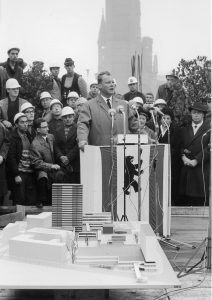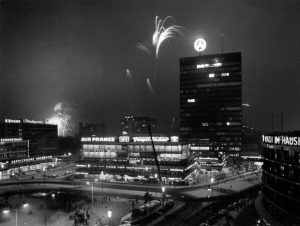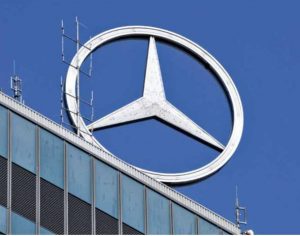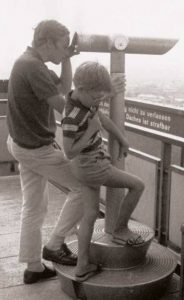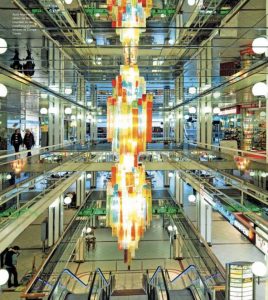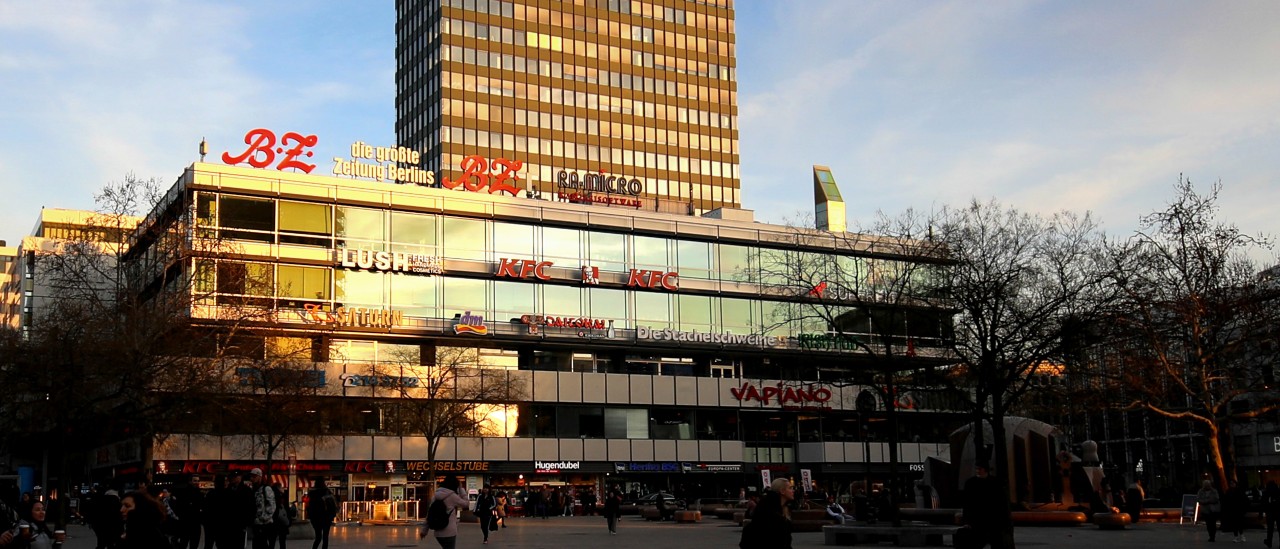
Storytelling
The freshly cleared building site in 1963. Construction of the Europa Center began shortly afterwards. (Image source: Pepper Group of Companies, Ivan Krusnik)
20 years after the Romanesque Café and also the neighbouring Bahnhof Zoo were destroyed in a night of bombing, the governing mayor Willy Brandt and developer Karl Heinz Pepper ceremoniously laid the foundation stone for the construction phase of the Europa Center.
Topping-out ceremony of the Europa Center - photographers and members of the press document the historic moment (Photo source: Photohaus Leppin)
Even during the construction work in 1964, the Europa Center served as a trendsetting backdrop: Here, models and painters pose in front of the lift of the high-rise building. (Photo source: Heiz O. Jurisch)
Governing Mayor Willy Brandt during his speech at the opening of the Europa Center. Note the solemn seriousness of all participants, as was still the case on such occasions. (Photo source: Photohaus Leppin)
The Mercedes star on the roof ensures the absolute distinctiveness of the Europa Center. With a diameter of 10 m and a weight of 18 tons, the star shines with 681 m of high-voltage fluorescent tubes and rotates 2 times / minute around its own axis. It has even made it into the "Guinness...
read more...
...in their former formation (G. Pfitzmann, R. Ulrich, A. Strietzel, I. Wellmann, I. Wolffberg, j. Herbst, W. Gruner, K. Becker (clockwise from top). The cabaret "Die Stachelschweine" is the oldest tenant in the Europa Centre. Established in 1965 as a former student cabaret, the theatre continues to this day to...
read more...
It weighs 18 tonnes, is 10 metres in diameter, rotates twice a minute and shines with the help of 681 high-voltage fluorescent tubes. Together with the star, the Europa Center reaches a height of 103 metres. The defect in the 4.5 tonne rotary drive in 2006 was repaired with the help of a Russian heavy-lift helicopter from 25 to 27 April 2007.
read more...
The i-Point on the skyscraper with its numerous telescopes immediately became the centre's main attraction. Until 1992, it offered the best view of the entire city from the west side. Then the viewing platform was closed to the public, also for safety reasons.
Some fixtures from the early days, such as the Murano lamps, have defied all change and are now timeless beauties and are often, with their mirrored surroundings, a good subject for many photographers. (Picture credits: ullstein Bild / Schöning)



